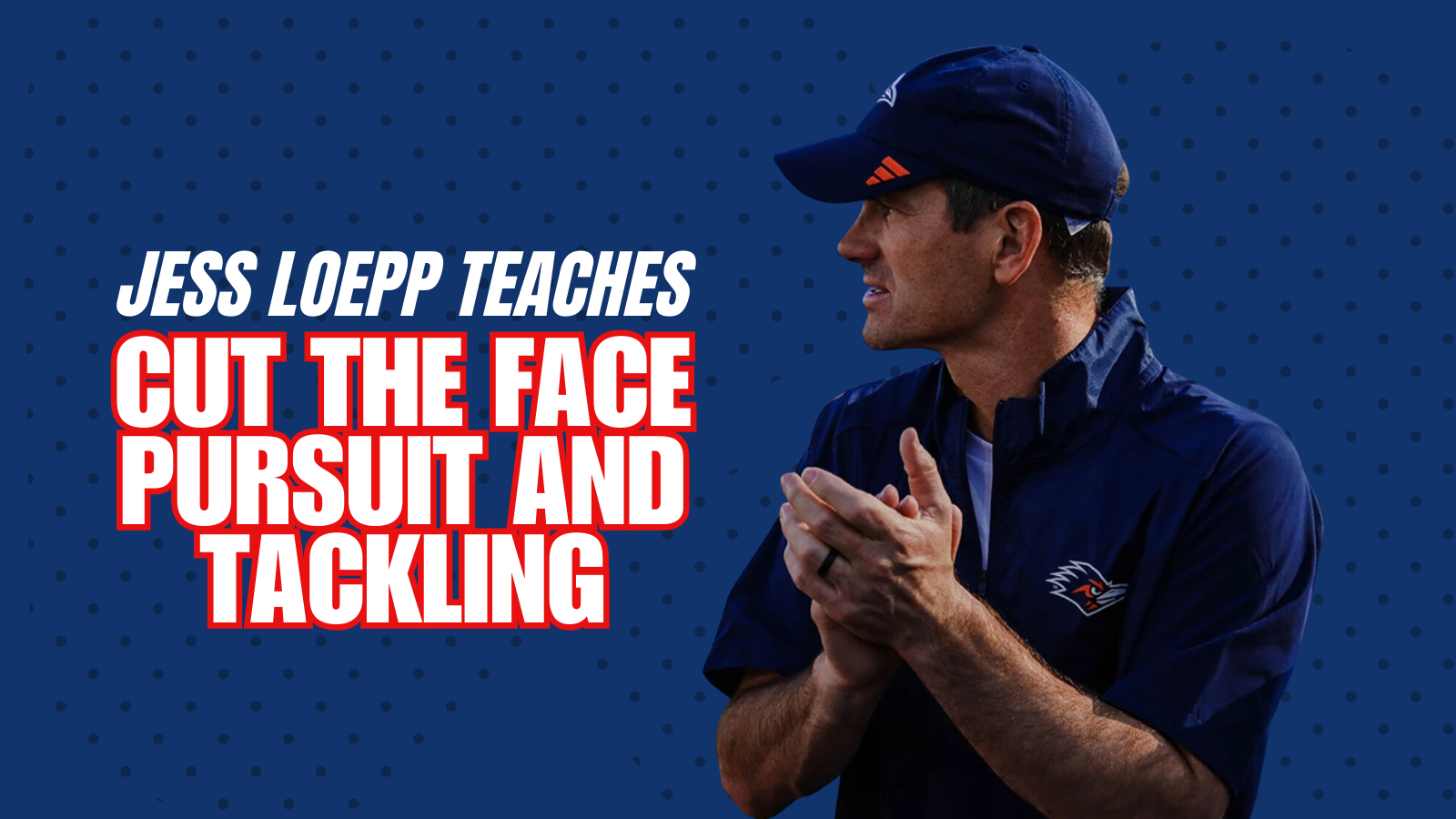
The smart coach knows the importance of limiting big hits in practice to preserve player health, but they still need to prepare their teams for the game’s physical demands. To address this, as a collective, we’ve gone to “thud” and “tag” in practice to limit those hits that take a toll over the course of a season. At UTSA, you won’t see the runners slowing down to thud or tag a ball carrier or receiver.* They use a technique called “Cut the Face and Press the Hips.” As Jess Loepp, Defensive Coordinator at UTSA, says, “We don’t slow down in practice, so in a game, we’re not slowing down.” They can still take the contact out of the practice reps with this approach, but they are still training the skill that makes a difference on game day, speed.
*Yes, they teach players to breakdown but reserve that for open field one on one tackling.
The Birth of “Cut the Face” Tackling
The “Cut the Face” technique emerged from the necessity to balance player safety in practice with the need for relentless, aggressive defense on game day. Defensive minds like Jess Loepp saw the potential to enhance both aspects by rethinking traditional methods.
As Loepp recounts, the technique was first introduced to him by Tyrone Nix, who proposed a radical departure from the norm. Instead of breaking down, defenders would maintain full speed and target the outside hip of the ball carrier. Initially, this approach seemed counterintuitive, but the results spoke for themselves.
What is “Cut the Face” Tackling?
“Cut the Face” tackling is a technique that diverges from the conventional wisdom of slowing down and breaking down before making a tackle. Instead, it emphasizes maintaining full speed and targeting the outside hip of the ball carrier. The primary goals are to disrupt the ball carrier’s momentum, force them to stop or change direction, and enable other defenders to swarm and finish the play.
The Fundamentals of “Cut the Face”
- Full Speed Engagement: The defender runs at full speed toward the ball carrier, aiming for the outside hip. There is no breaking down or slowing down.
- Targeting the Outside Hip: The defender aims to “cut the face” of the ball carrier by making contact at the outside hip. This action forces the ball carrier to stop or redirect, making them vulnerable to other defenders.
- Press the Hip: While one defender cuts the face, other defenders are trained to press the hip. This means they follow closely, targeting the near hip of the ball carrier to ensure they can’t escape to the outside.
Benefits of “Cut the Face” Tackling
- Maintains Defensive Speed and Aggressiveness: Defenders remain aggressive and fast by eliminating the need to slow down, creating more impactful and disruptive plays.
- Reduces Reaction Time for Ball Carriers: Ball carriers are used to defenders slowing down and breaking down, giving them time to react. The full-speed approach catches them off guard, reducing their decision-making time and increasing the chances of a successful tackle.
- Encourages Team Tackling: This technique relies on multiple defenders converging on the ball carrier. While the initial defender cuts the face, others press the hip, ensuring that the ball carrier has nowhere to go and is quickly brought down.
- Productive Missed Tackles: In the context of “Cut the Face,” even missed tackles can be productive. By forcing the ball carrier to stop or redirect, the initial defender still disrupts the play, allowing teammates to swarm and finish the tackle. Loepp explains, “Not all missed tackles are the same. A productive miss forces the ball carrier to stop, giving others the chance to make the play.”
Implementing the Technique
Implementing “Cut the Face” tackling requires a shift in coaching philosophy and practice habits. Here’s how you can integrate this technique into your defense:
- Education and Drills: Start by educating players on the principles of the technique. Use drills emphasizing full-speed engagement and targeting the outside hip without breaking down.
- Accountability and Immediate Feedback: During practices, hold players accountable for their effort and execution. Provide immediate feedback to reinforce the correct technique and correct mistakes on the spot.
- Game-like Scenarios: Incorporate “Cut the Face” tackling into game-like scenarios during practice. Simulate different situations where players can practice maintaining speed and targeting the hip, ensuring they are ready for game day.
- Note for the Ball Carrier in Practice: Coach Loepp advises ball carriers in practice to be aware of the defenders’ defensive technique. He specifically warns them not to try to juke or bounce outside of the defenders who are using the “Cut the Face” technique, as this could lead to a huge collision. Loepp emphasizes that defensive players are trained not to slow down, so offensive players should expect and be prepared for aggressive, full-speed engagements.
Results
In 2023, Loepp helped guide the Roadrunners to a 9-4 overall record, a 7-1 mark for a third-place finish in their American Athletic Conference debut campaign and the program’s first bowl win with a 35-17 victory over Marshall in the 2023 Frisco Bowl.
UTSA’s defense enjoyed a record-setting season, smashing the school record for sacks with 46 and taking down the tackles for a loss mark with 99. The Roadrunners also broke single-game standards with seven sacks against Texas State and 13 quarterback hurries versus East Carolina. UTSA led The American, ranked second nationally with 3.54 sacks per game, and ended up fifth among FBS teams with a conference-leading 7.6 tackles for loss per contest.
“Cut the Face” tackling is more than just a technique; it’s a paradigm shift for the Road Runners. This method offers a powerful alternative to traditional tackling strategies by emphasizing speed, aggression, and teamwork. It fits right into the “always” for the UTSA: relentless effort and physicality.
Resources:
Coach Loepp presented “Cut the Face” in a presentation and live on field demo at the Texas High School Coaches Association Coaching School. Those presentations can be found on CoachTube.


